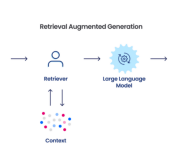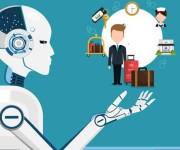How to Use Big Data to Your Competitive Advantage in Banking?
Small Data is not Enough Anymore
The hyper connected world we live in generates over 2.5 billion gigabytes of data daily. This comes from social media, messaging, video uploads, and data created by sensors from IoT. Only in the US, there are over 700 million credit cards, and the average user makes about 20 transactions a month. When adding debit cards, reward cards, company transactions and overseas customers, it becomes clear that traditional spreadsheet environments are going to have a hard time keeping up. We can say that dealing with this problem using only small data tools is not enough anymore.
Bank-specific Uses of Big Data
Although big data can be useful in many verticals, the banking sector faces particular challenges related to risk management, compliance, and fraud, where big data can prove particularly valuable.
Real-time Risk Analysis
The banking sector is subject to the Basel III framework which aims to protect all banks from capital-related risks, credit risks, and financial risks to improve the banks’ abilities to counteract market shocks. Real-time analysis of transactions can help raise red flags when certain thresholds have been surpassed and warn banks to take appropriate measures. Big data is a suitable tool due to the high frequency of trading data and the sheer volume of it. Recent studies show an array of models that can be used to assess different types of risks, like systemic risk.
Fraud Detection
The beauty of big data analysis is that it can detect patterns and classify them into normal and abnormal. This is the cornerstone of fraud detection. Since identity theft, mortgage application frauds and credit card frauds are on the rise, banks need a tool to catch an early alarm call and to ensure fast resolutions. Credibility, capital, and reputation are at stake every time a bank is the target of an attack, since customers are anxious about the safety of their financial data. Big data helps create a “normal behavior” profile for each customer including geo location, withdrawn amounts, and payments made. Every time there is a transaction that doesn’t fit the bill, the user is alerted.
Compliance & Regulatory
The banking sector is subject to essential compliance regulations. The institutions struggle to remain within the guidelines while maximizing their profits. Big Data consultants from Itransition state that these instruments can offer a competitive advantage in analyzing investment portfolios and creating hedged versions while complying with the Dodd-Frank Act or similar local regulations.
General Applications Useful to Banks
Apart from the sector-specific applications, banks can employ big data in a similar way to retail chains, to increase the personalization of their offer and build a better relationship with the customers.
360-degree Customer View
A bank has access to a full user profile for each of their customers. The transaction history, the debt ratio, spending habits, all tell a story and can help the bank to define personas, understand preferences and lower churn rates. This is the foundation for personalization that drives loyalty. Banks should go beyond just adding the name to a greeting and use recommendation engines to present the customer only with the most relevant content. To save some advertising money, you can also build probabilistic models of interest in a specific product based on the customer’s lifestyle (traveler, parent, student).
Customer Segmentation
Before big data, segmentation was based on demographics, geographic location and, to put it bluntly, stereotypes. Right now, with advanced clustering algorithms (k-means, fuzzy clustering), an institution such as a bank or a credit company can create segments based on behavior, for example, credit card usage. Also, identifying the most valuable customers can be the base for personalized discounts and loyalty schemes.
Multichannel
Each customer has a preferred interaction channel, and sometimes they are not even aware of this fact. By studying behaviors retrieved from big data sources such as email logs, social media communication, and website traffic, banks can enrich each user’s profile with the preferred channel and use that one to contact them. The same user can switch between channels and only use some of them to convert, and all the other ones just to make an informed decision.
Chatbots
Customer care service is an integral part of the bank’s relationship with their customers. Offering multilingual, 24/7 service is expensive and unfeasible. Yet, chatbots, powered by big data retrieved from existing call-center logs, can help create conversational interfaces that respond to frequent and straightforward inquiries.
Reducing Costs
As in any business, innovation is even more intriguing if it brings the opportunity to reduce costs. Big data has been democratized, and there are no more financial barriers in using it. It has already crossed the chasm towards helping banks save money by analyzing performance, optimizing discounts and price offers, saving on customer service employees and even closing down unproductive departments or branches.
Examples
Churn rates affect banks’ profit and should be lowered. American Express has built a model with 115 variables that correctly pinpoint about a quarter of the accounts that will close in the following trimester.
Prejudice and bias can cost a company money and image. When the Bank of America took a closer look at what their customers used the loans for, they changed their marketing message from one directed to parents of college kids to a broader one which sold ten times more.
Nina, Aida, and Erica are chatbots already having thousands of conversations with bank customers, answering any queries about accounts, providing financial advice and saving the institutions they belong to thousands of dollars.
On a Journey to Simplification
As a paradox to the name, big data’s role in a bank is to simplify tasks. It should make processes as automated as possible, and offer actionable insights with just a few clicks, given that a well-designed dashboard is already in place. This is only possible with clean and organized data, even if it is unstructured. To take the full advantage of these new technologies, banks should rethink their data storage structures, dismiss silos and cooperate with branches and customers to get everything centralized.




























